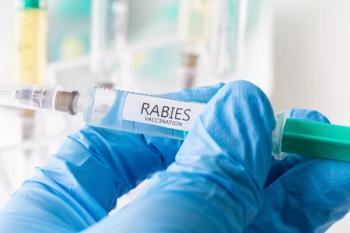
Here are the essential facts for practicing veterinarians.

Here are the essential facts for practicing veterinarians.

Find out from Drs. Pete VanVranken and Richard Ford in our Specialist in the Spotlight video series.
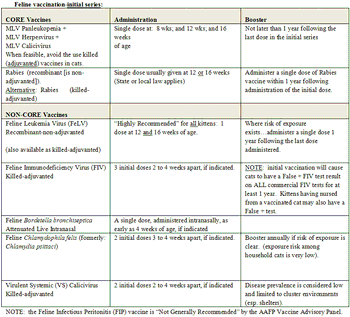
Over the past 3 decades, the number of vaccines licensed for use in dogs and cats has increased significantly. Today, in the United States, the list of companion animal vaccines (proprietary products) numbers about 180.

Chronic bronchial disease (CBD) is a general term used to describe a complex, progressive respiratory syndrome characterized by excessive mucous secretion within airways and thickening (hyperplasia of smooth muscle and epithelium) in the bronchial tree and frequent coughing.
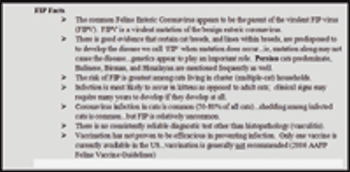
As long as we've known about, tried to diagnose, and attempted to treat feline infectious peritonitis (FIP), it still eludes us! This complex (?.and getting more complex all the time) infection of kittens and adult cats is caused by a feline Coronavirus (FCoV).

Since the original companion animal vaccines were developed and licensed more than 50 years ago, there has been a continuing effort to make vaccines safer and more efficacious. Today, it is generally agreed that the vaccines licensed for dogs and cats have not only saved millions of lives but also have an excellent safety record.

In just the past 3 to 5 years, advanced diagnostic capabilities have enhanced our ability to detect infectious pathogens in the dog and have given credence to the term "emerging" infections. However, the ever-expanding list of "emerging infectious diseases", in fact, may not be emerging at all?as it appears; many of these infections have, quite likely, existed in dogs for several years.

The feline retroviruses, FeLV and FIV, today are well recognized for their ability to cause profound immune-suppressive disease in cats throughout the world. Clearly among the most complex infections affecting the cat, a retroviral infection demands an immune response that is robust and sustained if the infected cat is to survive long-term.

While both parenteral and topical vaccines prevent signs of illness in exposed dogs, there are significant differences between the two products. First: in the only comparative challenge study published to date, it was shown that dogs vaccinated with a single dose of a topical (intranasal) vaccine were protected from infection and bacterial shedding.

In just the past 3 to 5 years, advanced diagnostic capabilities have enhanced our ability to detect infectious pathogens in the dog and have given credence to the term "emerging" infections. However, the ever-expanding list of "emerging infectious diseases", in fact, may not be emerging at all...as it appears; many of these infections have, quite likely, existed in dogs for several years. It's the emerging technology that has enabled our ability to detect these infections.

As long as we've known about, tried to diagnose, and attempted to treat feline infectious peritonitis (FIP), it still eludes us! This complex (....and getting more complex all the time) infection of kittens and adult cats is caused by a feline Coronavirus (FCoV).

Today, the list of licensed vaccines for just the dog and cat is large and diverse ...approximately 110 canine vaccines and 70 feline vaccines are available. Considerable differences among vaccines for the same antigen exist.

Closely related to Bordetella pertussis, the cause of "whooping cough" in humans, Bordetella bronchiseptica is a gram negative, aerobic coccobacillus particularly well adapted to colonize the ciliated respiratory epithelium of dogs and cats. (NOTE: it's known today that B. bronchiseptica is the progenitor of all 9 recognized Bordetellae).

In the language of law (at least in the US), the term "zoonoses" has not been defined. In medical terms, it refers to "infectious diseases shared by animals and humans." Of particular importance in both human and veterinary medicine are those zoonoses known to be transmitted directly from animals (vertebrates) to humans.

Chronic bronchial disease (CBD) is a general term used to describe a complex, progressive respiratory syndrome characterized by excessive mucous secretion within airways and thickening (hyperplasia of smooth muscle and epithelium) in the bronchial tree and frequent coughing.

The feline retroviruses, FeLV and FIV, today are well recognized for their ability to cause profound immune-suppressive disease in cats throughout the world. Clearly among the most complex infections affecting the cat, a retroviral infection demands an immune response that is robust and sustained if the infected cat is to survive long-term.

There is little argument among veterinarians that feline viral upper respiratory disease is perhaps the most common respiratory disorder for which cats are presented. In multiple-cat households and animal shelters world-wide, transmissible feline upper respiratory disease (URD) represents the most prevalent clinical disease in the population of cats at risk.
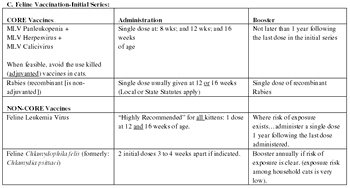
Over the last decade, publication of vaccination guidelines for the dog and cat have represented an effort on behalf of scientists, academicians, industry, and practicing veterinarians to develop recommendations based on the most current scientific studies available.

In 1985, the National Institutes of Health established the National Cholesterol Education Program (NCEP) with the goal of reducing the prevalence of high blood cholesterol in the United States. The program, which is still in effect today, is aimed at increasing the general public's awareness of the fact that there is an undisputed risk of coronary heart disease associated with elevated cholesterol levels, particularly low-density lipoprotein (LDL) cholesterol.

As long as we've known about, tried to diagnose, and attempted to treat feline infectious peritonitis (FIP), it still eludes us!
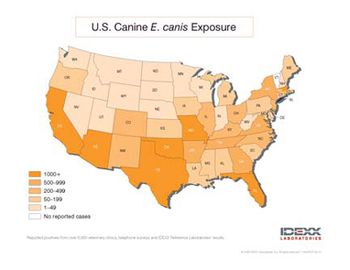
In just the past 3 to 5 years, advanced diagnostic capabilities have enhanced our ability to detect infectious pathogens in the dog and have given credence to the term "emerging" infections.

There is little argument among clinicians that feline upper respiratory disease is perhaps the most common respiratory disorder for which cats are presented.
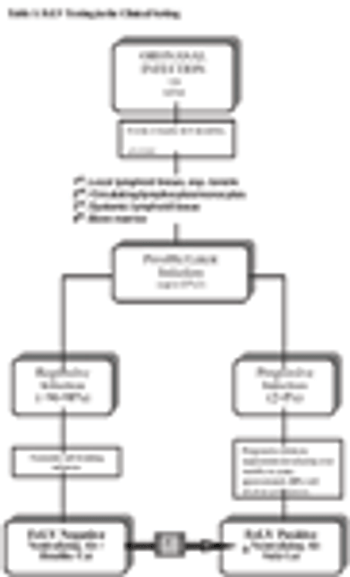
Simply stated, the goal of vaccination is to sensitize or prime the immune system such that it can generate a population of unique cells capable of mounting an effective immune response subsequent to infection by a pathogenic organism.
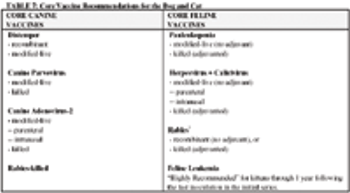
Vaccination GUIDELINES for the cat were first published in 1998; canine GUIDELINES followed in 2003. By the end of 2006, both sets of GUIDELINES had been reviewed extensively, updated, and published.

Closely related to Bordetella pertussis, the cause of "whooping cough" in humans, Bordetella bronchiseptica is a gram negative, Aerobic coccobacillus particularly well adapted to colonize the ciliated respiratory epithelium of dogs and cats.

Clinical signs related to the upper respiratory tract, in both dogs and cats, are among the most common presenting complaints encountered in small animal practice and, interestingly, are frequent reasons for referral to specialty practices and veterinary teaching hospitals.

On March 1, 2006, the American Animal Hospital Association (AAHA) released the second iteration of the Canine Vaccine Guidelines, which includes a number of important updates and additions to the initial version published just three years ago.

In the March/April issue of the Journal of the American Animal Hospital Association (AAHA), an Executive Summary of the 2003 Canine Vaccine Guidelines was published. A full text of the guidelines, recommendations, and supporting literature is available to AAHA members on the organization's Web site (www.aahanet.org).

Published: August 1st 2010 | Updated:

Published: August 1st 2010 | Updated:

Published: August 1st 2010 | Updated:

Published: August 1st 2010 | Updated:

Published: August 1st 2010 | Updated:

Published: August 1st 2010 | Updated: